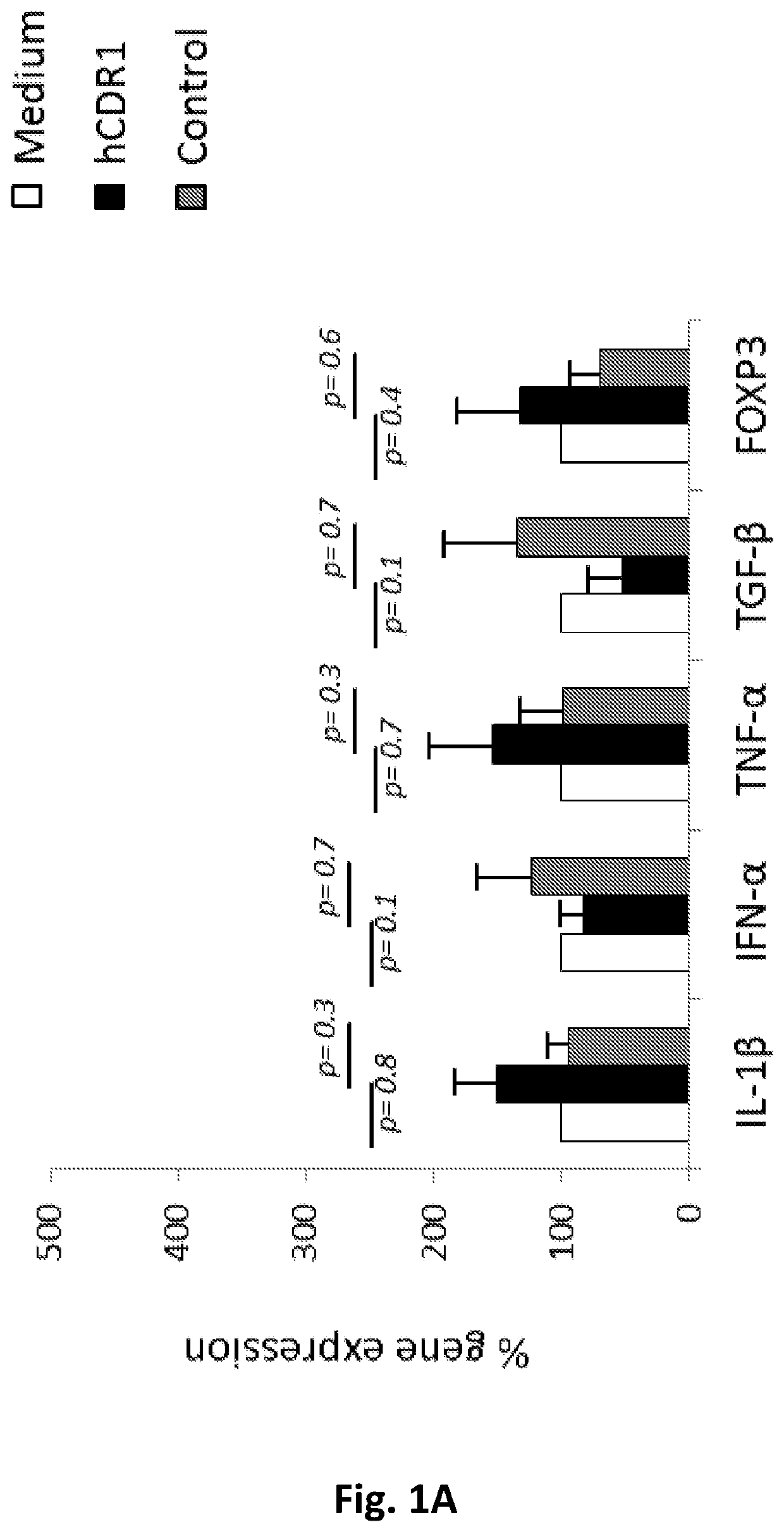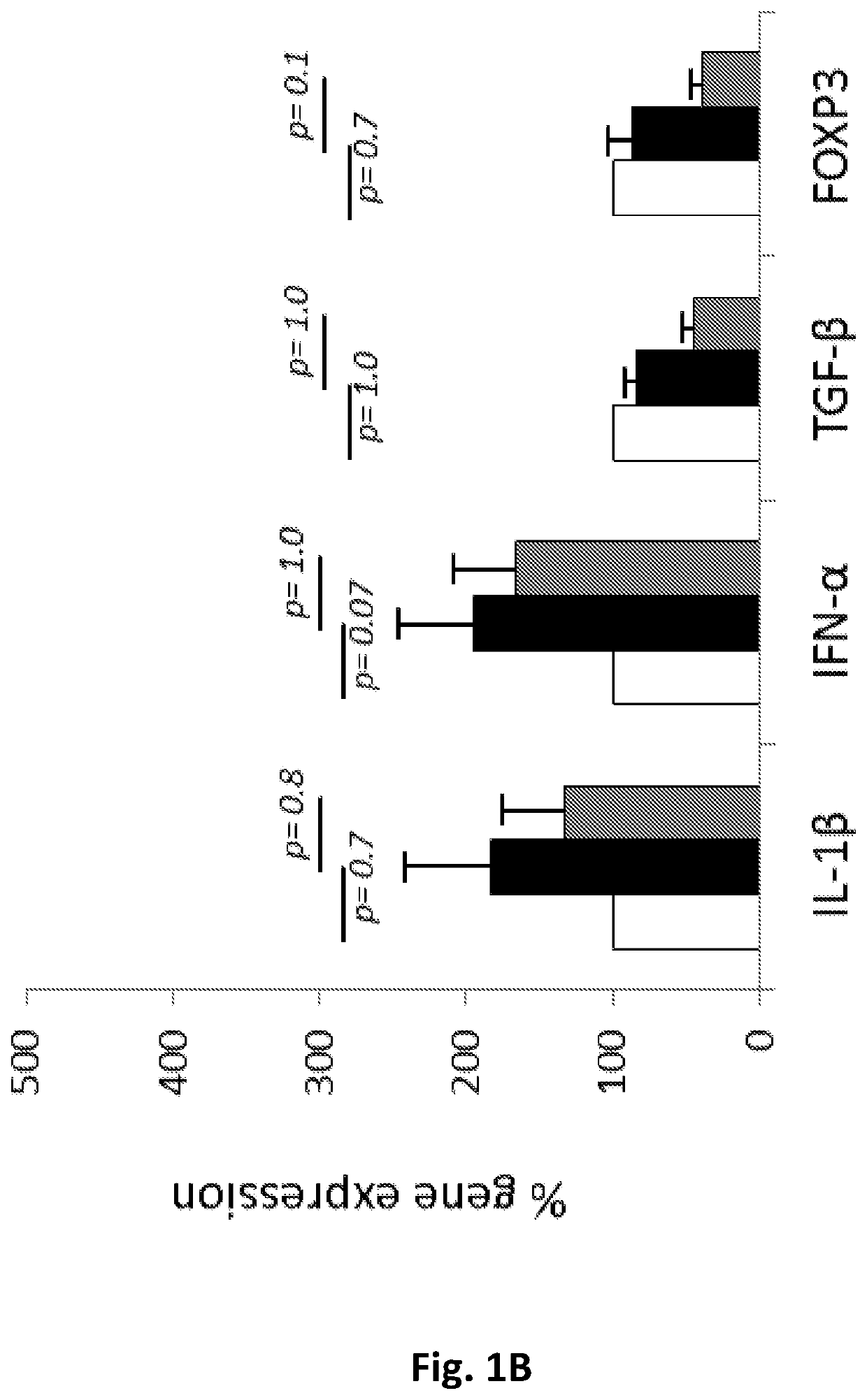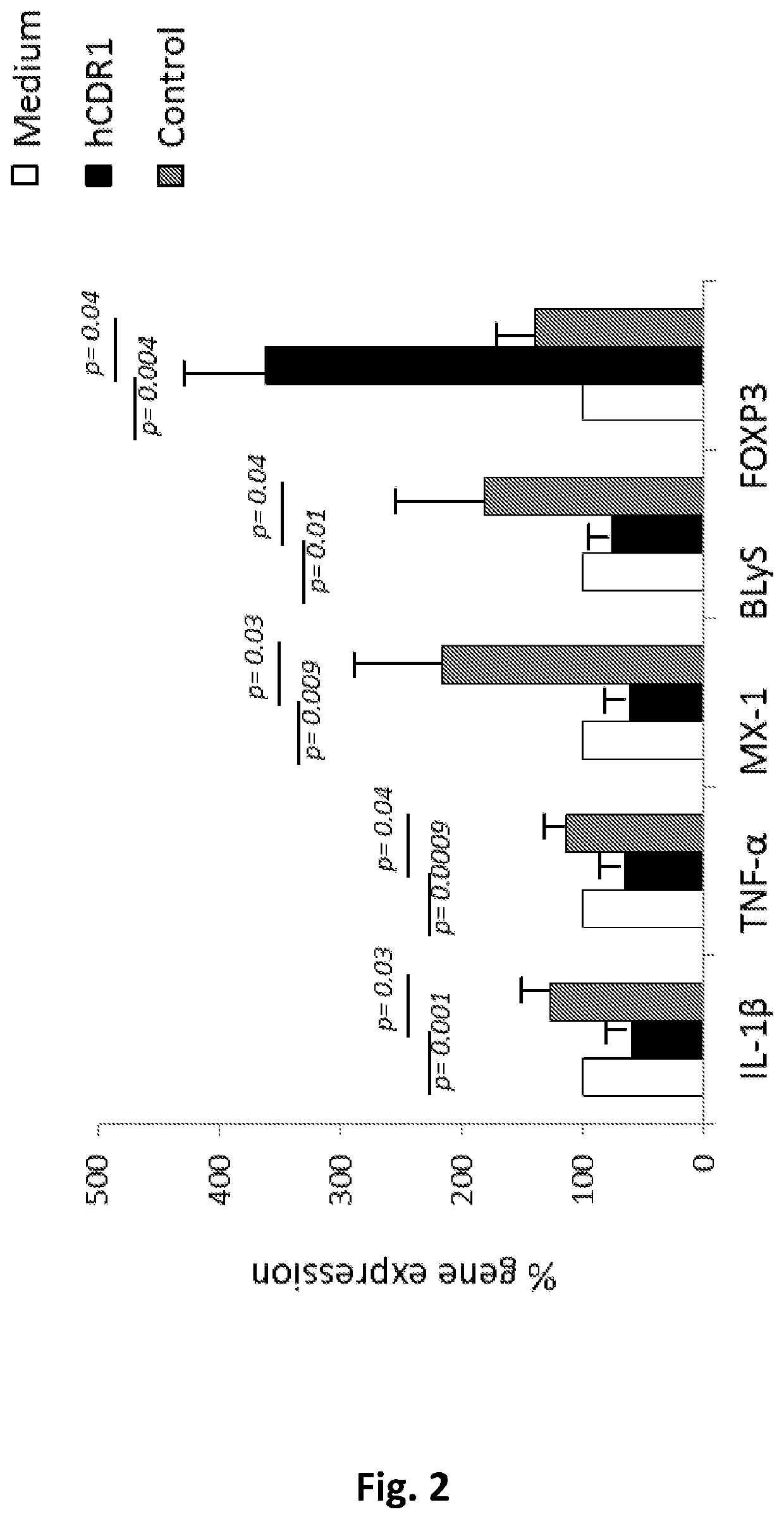Peptides for treating sjogren's syndrome
- Summary
- Abstract
- Description
- Claims
- Application Information
AI Technical Summary
Benefits of technology
Problems solved by technology
Method used
Image
Examples
example 1
[0112]Effects of hCDR1 on Peripheral Blood Lymphocytes In-Vitro
Experimental Design
[0113]5×106 / mL peripheral blood mononuclear cells (PBMCs) obtained from blood samples of rheumatoid arthritis (RA) patients, anti-phospholipid syndrome patients (APS) and SS patients were incubated in-vitro in: medium alone, medium containing 25 μg / mL hCDR1 (SEQ ID NO: 1), or medium containing 25 μg / mL of control scrambled peptide (SEQ ID NO: 2). Following 48 hours of incubation, cells were collected and mRNA was prepared from all samples. The expression of various genes was determined using real-time RT-PCR. The control peptide has the same amino acid residues as SEQ ID NO:1 in a scrambled order.
[0114]No significant effects could be observed on gene expression of pathogenic cytokines when PBMCs of patients with either rheumatoid arthritis or anti-phospholipid syndrome were treated with hCDR1 (FIGS. 1A and 1B, respectively) compared to medium alone or compared to the control peptide. These findings sug...
example 2
[0118]Indoleamine 2,3-Dioxygenase (IDO) and Transforming Growth Factor β (TGF-β) Up-Regulation by hCDR1
Experimental Design
[0119]PBMCs of patients with pSS were isolated and incubated in vitro for 48 hours in the presence of medium, hCDR1 (SEQ ID NO: 1) or a control scrambled peptide (SEQ ID NO: 2). Thereafter, RNA was extracted from the cells and gene expression was determined by real-time RT-PCR. FIG. 3A demonstrates that in-vitro incubation of hCDR1 with PBMCs of patients with pSS up-regulated significantly the expression of the IDO gene as compared to its expression following cell incubation with medium alone or in the presence of the control peptide. This effect is specific to patients with pSS because, as shown in FIG. 3B, hCDR1 did not affect significantly the expression of IDO in PBMCs of subjects with RA.
[0120]Similar results were obtained with the expression of the gene for TGF-β, which was significantly up-regulated in PBMCs isolated from SS patients, in response to their ...
example 3
Experimental Design—Animal Model of SS
[0123]Various mouse models have been developed aiming to establish the symptoms of SS in vivo. Park et al. divided the models into three categories of spontaneous, genetically engineered, and experimentally induced development of SS-like disease (Curr. Pharm. Des., 2015, Vol. 21, pages 2350-2364).
[0124]In the present experiment, BALB / c mice, or similar model animals, are immunized by repeated intraperitoneal injections of short peptides from 60-kDa Ro antigen, and develop anti-Ro antibodies, salivary gland lymphocyte infiltrates, and salivary dysfunction that is highly reminiscent of human SS (Scofield et al., 2005, J. Immunol., Vol. 175, pages 8409-8414). Concomitant with the immunization, mice are injected subcutaneously (s.c.) with vehicle alone (PBS), 25-50 μg of control peptide in PBS or 25-50 μg of hCDR1 in PBS. Before, during and following treatment the mice are monitored for changes in at least one of the symptoms of SS, such as leukocyt...
PUM
| Property | Measurement | Unit |
|---|---|---|
| Fraction | aaaaa | aaaaa |
| Mass | aaaaa | aaaaa |
| Mass | aaaaa | aaaaa |
Abstract
Description
Claims
Application Information
 Login to View More
Login to View More - R&D
- Intellectual Property
- Life Sciences
- Materials
- Tech Scout
- Unparalleled Data Quality
- Higher Quality Content
- 60% Fewer Hallucinations
Browse by: Latest US Patents, China's latest patents, Technical Efficacy Thesaurus, Application Domain, Technology Topic, Popular Technical Reports.
© 2025 PatSnap. All rights reserved.Legal|Privacy policy|Modern Slavery Act Transparency Statement|Sitemap|About US| Contact US: help@patsnap.com



